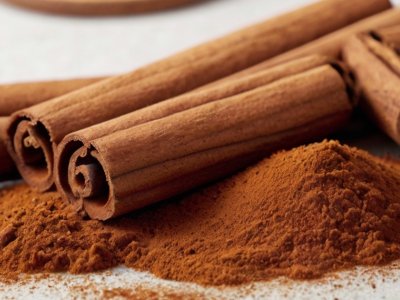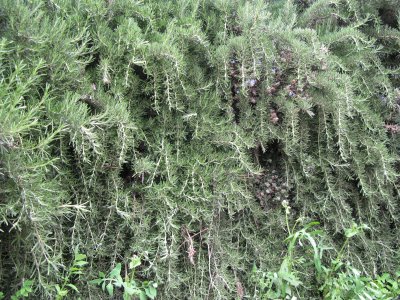Cinnamon oils What you need to know
Essential Oils Production & Conservation/
23.02.24

Cinnamon oils
What you need to know
By Martin Watt
I have decided to write about another oil which is hyped like crazy on social
media blogs and on some websites.
The first thing to consider is which oil are people referring to when they say
“cinnamon oil is good for x,y,z”? Cinnamon trees yield two totally different
essential oils, one from the leaves which is similar to clove oil, and one from
the bark.
There is a plethora of Latin names declared for “cinnamon” because:
1) There are numerous different varieties.
2) Even scientific researchers often give incorrect botanical names.
This is very similar to the identification issues over frankincense.
Generally the oil traders accept these classifications:
1. Cinnamon leaf oil: Cinnamon verum J. S. Presl. or C. zeylanicum Nees. This
is commonly referred to as 'Ceylon cinnamon' and is equivalent to clove leaf
oil, but is relatively safe if it is correctly diluted.
2. Cinnamon bark oil: Cinnamomum verum J. S. Presl. or C. zeylanicum Nees.
This is a very dangerous substance. Even when greatly diluted it can burn the
mucous membranes in the mouth or intestinal tract. It is a powerful skin
sensitizing agent and in my opinion it should never be used on the skin even in
tiny amounts. I once got a tiny smear on my nose from sniffing a bottle and
regretted it for hours afterwards. Even when cleaned off it continued burning
and killed the superficial skin cells resulting in a sore patch for about a week.
By Martin Watt
I have decided to write about another oil which is hyped like crazy on social
media blogs and on some websites.
The first thing to consider is which oil are people referring to when they say
“cinnamon oil is good for x,y,z”? Cinnamon trees yield two totally different
essential oils, one from the leaves which is similar to clove oil, and one from
the bark.
There is a plethora of Latin names declared for “cinnamon” because:
1) There are numerous different varieties.
2) Even scientific researchers often give incorrect botanical names.
This is very similar to the identification issues over frankincense.
Generally the oil traders accept these classifications:
1. Cinnamon leaf oil: Cinnamon verum J. S. Presl. or C. zeylanicum Nees. This
is commonly referred to as 'Ceylon cinnamon' and is equivalent to clove leaf
oil, but is relatively safe if it is correctly diluted.
2. Cinnamon bark oil: Cinnamomum verum J. S. Presl. or C. zeylanicum Nees.
This is a very dangerous substance. Even when greatly diluted it can burn the
mucous membranes in the mouth or intestinal tract. It is a powerful skin
sensitizing agent and in my opinion it should never be used on the skin even in
tiny amounts. I once got a tiny smear on my nose from sniffing a bottle and
regretted it for hours afterwards. Even when cleaned off it continued burning
and killed the superficial skin cells resulting in a sore patch for about a week.
Cinnamon bark oil is restricted in all cosmetic products by the IFRA.
In addition to the above, Cinnamomum cassia Blume, is commonly referred to
as 'Chinese cinnamon'. This is frequently sold as Ceylon cinnamon because it is
cheaper. Its properties are similar but its fragrance is not so good.
There are many other varieties of cinnamon trees all of which yield essential
oils with a highly variable composition. Therefore, when looking at research
papers you must ascertain which variety of tree has been used. Probably the
best guide on the likely variety is a provable geographical location from which
the raw material has originated.
Due to these differences in composition, you should always ask
someone who just states “cinnamon oil” which one do you mean, bark
or leaf. I have found that dangerous error on numerous web sites,
even those run by leading members of trade organisations. Just to
make matters worse you will come across scientific research papers
where they just say “cinnamon oil”.
Medicinal claims:
Frequently the claims made for cinnamon bark essential oil are exactly the
same as the traditional medicine uses of the bark. Indeed cinnamon bark
powder taken internally can be fantastic for stomach upsets but the essential
oil is far too aggressive for such use.
There are numerous research papers proving that cinnamon bark oil is a
powerful anti microbial agent. Journal of Ethnopharmacology. Volume 67,
Issue 3, pp. 269 - 277, 14 October, 1999. Das Manosi et al. Int. J. Pharm.
2013,4 (4). KMITL Sci. Tech. J. Vol. 7 No. 1 Jan. - Jun. 2007. However, what is
rarely mentioned is that it kills organisms by destroying their cell walls. The oil
will have exactly the same effect on your skin and it can burn wherever it is
applied.
When reading medicinal claims based on research papers one must always look
at the research to see what type of extract has been used. Often you will find
the research has been done using solvents such as ethanol or water. Such
extracts are very different to the essential oil and therefore it is wrong to
assume that the same activity will be present in both types of extract.
The agents of multi level companies are notorious for publishing research
references to justify their therapeutic claims. When checked you will often find
the references are to solvent extracts such as the above. Frequently also they
are to lab tests done on isolated cells which can rarely be extrapolated to the
same use in humans.
Beware of claims for cinnamon bark oil based on the work by Dr Penoel. He
has in the past recommended the use of cinnamon bark oil in rectal 'gellules'
equivalent to 29 times the recommended oral maximum safe level of the world
health organisation. Almost everyone in aromatherapy that is found to be
recommending the internal use of essential oils has based what they say on
the work of Penoel and Franchomme. Both these individuals have fabricated
therapeutic uses based on the major chemical groups found in
essential oils. More on that elsewhere in the files.
More details on the errors on cinnamon oil are in the compilation file 'DoTerra;
Young Living; Dr Axe' at the top of the article archive page.
Just to muddy the waters a bit more, the principal flavour chemical in
cinnamon bark oil is cinnamic aldehyde. This single chemical is commonly used
in the food trade but it can be natural or more often synthetic. However, the
volumes used as food flavours are tiny and are considered safe for
consumption. The less scrupulous bulk oil traders can add this chemical to
cinnamon bark oil to bulk it out and make it more profitable.
The above is where the problems begin for those using essential oils internally.
The volumes recommended for internal use found on blog sites are many times
higher than those used by the food trade. In that case the person consuming
the oil is being exposed to synthetic chemicals in far higher doses than when
safety evaluations were carried out on the chemical. It is often the case that
known dangerous extracts can be used in food and flavour trades at
established safe levels of use. However, these should not be used at the far
higher levels recommended by numerous social media blogs and by certain con
artists involved in promoting quack remedies.
Beware of soap containing cinnamon bark oil. Home producers often have no
clue on the safety issues of natural substances. They replicate formulas from
old books to produce goods that nowadays would be banned for normal retail.
I have seen 'hand crafted' soap that had an overwhelming smell of cinnamon
bark oil. That indicated it was added in far too high amounts and was probably
unsafe.
Beware of any aftershaves or perfumes made by so called “natural perfumers”.
Many of their products are fine, but some are not if they are using cinnamon
bark oil as well as a few other dangerous oils. Don't forget that artisan
producers have rarely had any formal training but instead they pick up the
information they want from social media sites. That is asking for trouble.
Lastly never forget that essential oils and water do not mix. I have seen so
many people suggesting diluting essential oils in water and drinking the result.
If you try that with cinnamon bark oil the tiny droplets are likely to stick to
your throat on the way down and cause burning.
Summary
Would I ever use cinnamon bark oil? No never, not even in a diffuser. I have
assembled too much safety data to even contemplate using it.
Would I ever use Cinnamon leaf oil? Yes in the appropriate dilution but rarely
on the skin. More likely in a diffuser and in a blend rather than alone.
Would I use these oils in food? No never, I would use the dried herbs.
Source and copyright:© 2019 aromamedical.org
264
More posts


